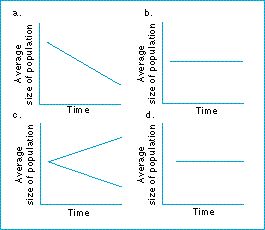Natural selection and variation - What are the types of natural selection?

Types of natural selection
We can distinguish three kinds of natural selection, according to their effect on a character such as body size.
• Directional selection
Smaller individuals may have higher fitness (i.e. produce more offspring) than larger individuals. Natural selection is then directional: it favors smaller individuals and will, if the character is inherited, produce a decrease in average body size. Directional selection could, of course, also produce an evolutionary increase in body size if larger individuals had higher fitness.
• Stabilizing selection
Natural selection could be stabilizing. The average members of the population, with intermediate body sizes, may have higher fitness than the extremes.
• Disruptive selection
Natural selection could favor both extremes over the intermediate types. This is called disruptive selection.
A final theoretical possibility is for there to be no relation between fitness and the character in question: then natural selection is not acting on it.
The biologist Richard Lewontin reminds us that not all aspects of an organism can be explained by natural selection.
Figure: different kinds of selection result in different effects upon characters such as body size. (a) is directional selection (b) is stabilizing selection (c) is disruptive selection and (d) is no selection at all on the character's size.
| Next |



